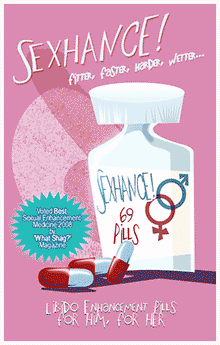skip to main |
skip to sidebar
As I dosed off to sleep last night with thoughts of my previous post and today's upcoming post mulling away, I gave some thought to exactly who is Dr. Wright? Take a deep breath, it's a long one...
As has been already established, our Doctor is a highly learned and aldulterous man. The storyboards from the past couple of weeks [a few coloured ones of those coming up, by the way] have enabled me to further build up this character through his varied facial contortions, but hey, they don't come out of thin air.I thought to myself about some characters from film and television who could bear resemblance to Dr. Wright in various terms [see below] which could help to inform the development of his character.
First up, everyone's familiar with him, it's Basil Fawlty:
 Then, perhaps less familiar, Bill Murray as famous film actor Bob Harris in Sophia Coppola's Lost in Translation (2003):
Then, perhaps less familiar, Bill Murray as famous film actor Bob Harris in Sophia Coppola's Lost in Translation (2003):
 And finally, one whom I am not even terribly familiar with, Dr. Alan Statham from Channel 4's Green Wing (2004):
And finally, one whom I am not even terribly familiar with, Dr. Alan Statham from Channel 4's Green Wing (2004):
 Now, I don't want to go into deep, profound character analysis and deconstruction here, I've merely listed these characters as; A. I find them each uniquely funny, B. They roughly match the age of Dr. Wright, and C. They all share frayed and amusing relationships with women or their spouses.
Now, I don't want to go into deep, profound character analysis and deconstruction here, I've merely listed these characters as; A. I find them each uniquely funny, B. They roughly match the age of Dr. Wright, and C. They all share frayed and amusing relationships with women or their spouses.
Looking over my boards/script, Dr. Wright can be seen as someone with a short fuse and something of a split personality:
- At the begining he is grumpy and at the end of his tether with life and marriage.
- Then, he recieves a message from Nancy, freshly invigorated.
- This is followed by mesmerisation with her stunning beauty, throwing any notion of his intellect out of the window to become a gawping neanderthal.
- Finally, in the third act, post scary-drugging, he is a broken shell of a man, now prepared to be humble towards his wife through guilt and remorse.
By breaking his 'modes' down this way, it can be better seen how he resembles each of the afformentioned characters:
- His 'Act 1-self' - the grumpy/mid-life crisis-y one resembles Bob Harris, who is also sick and tired of his wife, ultimately finding he is happy to be away from her in another country, if only for a little while.
- The 'End-of-act 1 into-act 2-self' is like Alan Statham, excitable, jumpy, and very horny - almost driven mad by it all.
- And finally, Basil Fawlty, who actually covers Dr. Wright in some capacity across the three acts. He resents Sybil greatly, driving him to undermine her and spite her at many a time [and always in vain, or ultimately to bite him back in the end]. He's got the short fuse as well, and when Sybil bares her teeth, or with the knowledge that she will rain destruction on Basil, he relents with his tail in between his legs ('Act 3-self', Dr. Wright).
So, there we have a very crude break down of some strong comedy characters. With these qualities in mind, I set to having a decisive bash at Dr. Wright's look. And the result... meh, I'm disliking it with each repeated viewing, in all honesty...
I feel as though I have been struggling with Dr. Wright's look from day one - when I put pencil to paper, something very generic typically results after a couple of minutes. The result below I still feel is somewhat generic and is far from final, but I feel it is a step in the right direction, afformentioned thoughts considered.
.png)
So, I was watching Se7en with a couple of my housemates last week... Neither of them had seen it and I thought they should be provided with a couple of hours of thrilling enlightenment.
A choice favourite of mine, director David Fincher (Fight Club, Zodiac) presents us with a gripping story following a murder case revolving around the Seven Deadly Sins, and visually, I feel this film can send a shiver up one's spine with its tonal choices, cinematography, and most intriguingly - the opening and closing credits! I'll begin with a few screenies of them:

 The still images don't quite fully do them justice, though the haphazard composition of both should give an idea of the unpredictable 'film-juddery' motion exhibited. The opening credits is a jumpy montage of the killer's preparations as we see him (or her) snipping bits of text and photographs up, writing things in a packed notebook, developing photos and so on. Images of these various actions are luma-matted onto one another for one or two frames at various intervals, with uneasy film-judder prevailent throughout. It paints a vivid and unsettling backdrop for the rest of the film to come...
The still images don't quite fully do them justice, though the haphazard composition of both should give an idea of the unpredictable 'film-juddery' motion exhibited. The opening credits is a jumpy montage of the killer's preparations as we see him (or her) snipping bits of text and photographs up, writing things in a packed notebook, developing photos and so on. Images of these various actions are luma-matted onto one another for one or two frames at various intervals, with uneasy film-judder prevailent throughout. It paints a vivid and unsettling backdrop for the rest of the film to come...
Speaking of which, it was only made apparent to me only on last weekend's watch of the stark choice of tone during the case investigation versus the penultimate scene where the killer has been apprehended. An example of a typical outdoor shot in the midst of the investigation:
 Not only is it consistently pouring down throughout the investigation, the tone further reflects this, even indoors with a cooler, fairly desaturated palette. It projects a sense of foreboding over the impending murders and how it will all wrap up in the end - as Morgan Freeman's character William Somerset plainly states to his partner, "This isn't going to have a happy ending."
Not only is it consistently pouring down throughout the investigation, the tone further reflects this, even indoors with a cooler, fairly desaturated palette. It projects a sense of foreboding over the impending murders and how it will all wrap up in the end - as Morgan Freeman's character William Somerset plainly states to his partner, "This isn't going to have a happy ending."
Furthermore, here we have the result within the last ten minutes of the film: Phew, hop out of the cold shower and into the sauna, things are quite the opposite temperature wise in the tense finale. The rain has stopped and the setting sun beats down as the journey draws to a close and a critical revelation is made. The stark difference between the two palettes only serves to create further unrest as things are wrapped up. And then, credits:
Phew, hop out of the cold shower and into the sauna, things are quite the opposite temperature wise in the tense finale. The rain has stopped and the setting sun beats down as the journey draws to a close and a critical revelation is made. The stark difference between the two palettes only serves to create further unrest as things are wrapped up. And then, credits: Very sad, but I think this is awesome - the credits travel downwards, which is really creepy I feel... I've never seen that before. Like the opening credits, the visuals are gnawed and gritty, composed of off-cuts of the killer's prep work, interspersed amongst the text throughout. I love how the film insists on maintaining its atmosphere, even as the majority of the audience are leaving the cinema, something that I feel would be imperative to keep a tight reign on - no stone left unturned.When all's watched and done, this film really reminded me of its relevance to informing my own work, and so, that's another one to consider in NMTB's visual repertoire. Character designs for Dr. Wright, Mrs Wright, and twisted surgeon Nancy Heart coming up.
Very sad, but I think this is awesome - the credits travel downwards, which is really creepy I feel... I've never seen that before. Like the opening credits, the visuals are gnawed and gritty, composed of off-cuts of the killer's prep work, interspersed amongst the text throughout. I love how the film insists on maintaining its atmosphere, even as the majority of the audience are leaving the cinema, something that I feel would be imperative to keep a tight reign on - no stone left unturned.When all's watched and done, this film really reminded me of its relevance to informing my own work, and so, that's another one to consider in NMTB's visual repertoire. Character designs for Dr. Wright, Mrs Wright, and twisted surgeon Nancy Heart coming up.



.png)













.gif)
